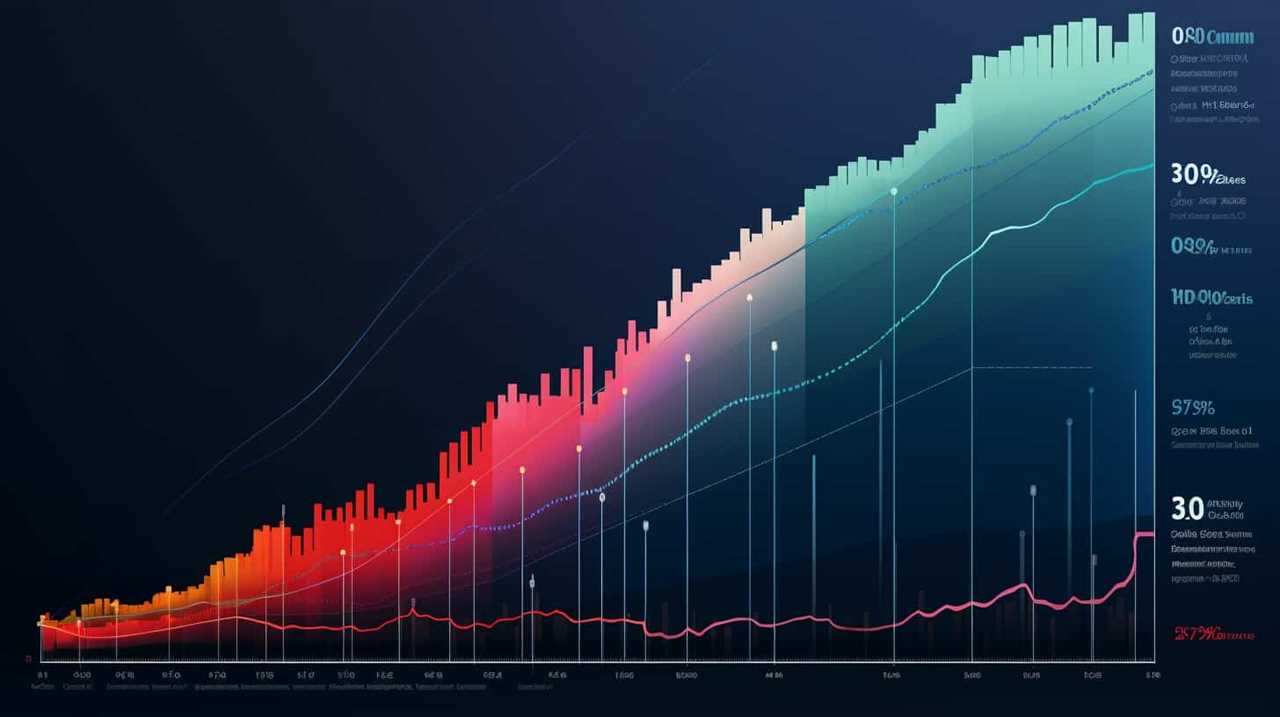Are you unsure about the importance of SEO for your craft brewing business? We understand your concerns. However, we want to emphasize that prioritizing comprehensive SEO is crucial for expanding your online presence and connecting with your desired audience in a manner that has the potential to revolutionize your business.
By optimizing your website, harnessing local search, leveraging social media, and enhancing the customer experience, you can skyrocket your online visibility and drive more traffic to your brewery.
In this article, we’ll show you how to master the art of holistic SEO for your craft brewer.
Key Takeaways
- Holistic SEO improves online visibility and overall success of craft breweries.
- Understanding the craft brewery market helps tailor SEO strategy to reach potential customers.
- Staying updated on market trends and opportunities gives a competitive edge.
- Conducting a competitive analysis provides insights into other breweries’ strategies.
The Importance of Holistic SEO
Holistic SEO is crucial for all craft brewers, as it significantly improves the online visibility and overall success of our business. As small businesses, we understand the importance of holistic SEO and how it can provide numerous benefits.

Firstly, holistic SEO allows us to establish a strong online presence, ensuring that our target audience can easily find us when searching for craft beers or breweries. By optimizing our website with relevant keywords and high-quality content, we can attract more organic traffic and increase our chances of converting visitors into customers.
Additionally, holistic SEO emphasizes the importance of user experience in our SEO strategy. It prompts us to focus on creating a user-friendly website that’s easy to navigate and provides valuable information to our audience. By prioritizing user experience, we not only improve our search engine rankings but also enhance the overall satisfaction of our customers, leading to increased brand loyalty and repeat business.
Understanding the Craft Brewery Market
To effectively optimize our craft brewery’s online presence, we must first understand our target audience’s demographics. By analyzing factors such as age, gender, and location, we can tailor our SEO strategy to better reach and engage potential customers.
Additionally, keeping a pulse on market trends and opportunities will allow us to stay ahead of the competition and capitalize on emerging consumer preferences.

Conducting a competitive analysis will provide valuable insights into the strategies and tactics employed by other breweries, helping us refine our own approach and gain a competitive edge in the market.
Target Audience Demographics
What is the profile of our target audience in the craft brewery market? To effectively craft our SEO strategy, we need to understand the demographics of our target audience. Conducting a consumer behavior analysis is crucial in identifying their interests and preferences. Let’s take a closer look at the characteristics of the craft brewery market:
| Demographic | Description | Examples |
|---|---|---|
| Age | Primarily millennials and Gen Xers who appreciate unique flavors and experiences | 25-40 years old |
| Gender | Both male and female, with a slight male skew | Beer enthusiasts of all genders |
| Income | Middle to high income earners who prioritize quality and are willing to pay a premium | Professionals, entrepreneurs |
By analyzing these demographics, we can tailor our SEO efforts to target this specific audience. Understanding their interests and preferences will allow us to create relevant and engaging content that resonates with them. This will not only drive traffic to our website but also increase brand loyalty and conversions.
Now that we have a clear understanding of our target audience, let’s explore the market trends and opportunities that can further enhance our craft brewery’s success.

Market Trends and Opportunities
Now, as we delve into the subtopic of Market Trends and Opportunities, it’s important to regularly analyze the craft brewery market to stay updated on emerging trends and capitalize on new opportunities. To ensure success in this dynamic industry, here are some key market trends and opportunities to consider:
- Increasing demand for craft beer: Craft beer has seen a steady rise in popularity, presenting opportunities for growth and expansion.
- Focus on local and hyper-local markets: Consumers are increasingly interested in supporting local businesses and experiencing unique, regional flavors.
- Innovation in flavors and brewing techniques: Experimentation with new ingredients and brewing methods can help differentiate your brand and attract adventurous consumers.
- Emphasis on sustainability initiatives: Incorporating sustainable practices, such as using renewable energy sources and reducing water waste, can appeal to environmentally conscious consumers.
- Meeting market challenges: Staying informed about regulatory changes, market competition, and consumer preferences is crucial to overcoming challenges and staying ahead in the craft brewery market.
Competitive Analysis Insights
How can we gain valuable insights into the craft brewery market through competitive analysis? By implementing effective competitive analysis strategies, we can uncover key information about industry leaders and understand the dynamics of the craft brewery market. Identifying the top players in the industry allows us to learn from their success and apply those learnings to our own craft brewery business. To illustrate the importance of competitive analysis, let’s take a look at a table comparing the market share and production volume of the leading craft breweries:
| Brewery | Market Share (%) | Production Volume (Barrels) |
|---|---|---|
| Brewery A | 20% | 100,000 |
| Brewery B | 15% | 80,000 |
| Brewery C | 10% | 60,000 |
| Brewery D | 8% | 50,000 |
| Brewery E | 5% | 30,000 |
Analyzing these figures can help us understand market trends, identify potential partnerships or acquisition opportunities, and make data-driven decisions to stay competitive in the craft brewery market.
Optimizing Your Website for Search Engines
To optimize our website for search engines, we focus on enhancing its visibility and ranking through strategic content and technical improvements. Here are some key techniques and strategies we employ:

- On-page optimization techniques: We carefully analyze and optimize various on-page elements such as meta tags, headings, URLs, and keyword placement. By ensuring that our content is relevant, well-structured, and easy to navigate, we improve our website’s chances of ranking higher in search engine results.
- Off-page optimization strategies: Building high-quality backlinks from authoritative websites is crucial for improving our website’s authority and credibility. We invest time in creating valuable content that others would want to link to, as well as actively seeking opportunities for guest blogging and influencer collaborations.
- Technical improvements: We constantly monitor and improve the technical aspects of our website, such as page speed, mobile responsiveness, and crawlability. Optimizing these factors not only enhances the user experience but also signals to search engines that our website is trustworthy and valuable.
- Keyword research and targeting: We conduct thorough keyword research to identify the most relevant and high-traffic keywords in our industry. By strategically incorporating these keywords into our content, we increase our chances of ranking for relevant search queries.
- Content optimization: We focus on creating high-quality, informative, and engaging content that aligns with the needs and interests of our target audience. By optimizing our content for both users and search engines, we aim to attract organic traffic and encourage social sharing.
By implementing these techniques and strategies, we can improve our website’s visibility and ranking in search engine results, ultimately driving more organic traffic and potential customers to our craft brewery.
In the next section, we’ll explore the importance of harnessing the power of local search.
Harnessing the Power of Local Search
When it comes to harnessing the power of local search, we need to focus on targeting local customers, optimizing for local SEO, and leveraging location-based keywords.
By understanding the unique needs and preferences of our local audience, we can tailor our SEO strategies to attract and engage them effectively.

Optimizing our website and content for local search will help us appear in relevant local search results, increasing our visibility and driving more qualified traffic to our craft brewery.
Targeting Local Customers
Harnessing the power of local search is essential for targeting local customers as a craft brewer. In order to effectively reach and engage with your local audience, it’s crucial to implement local marketing strategies and establish community partnerships.
Here are some key tactics to consider:
- Optimize your website for local search: Ensure that your website includes relevant keywords, location-specific content, and accurate business information.
- Claim and optimize your Google My Business listing: This will help your brewery appear in local search results and provide important information to potential customers.
- Leverage online review platforms: Encourage satisfied customers to leave positive reviews on platforms such as Yelp and TripAdvisor to enhance your local reputation.
- Engage with the local community: Participate in local events, sponsor local sports teams, and collaborate with other local businesses to build strong community relationships.
- Utilize geolocation targeting in online advertising: Reach potential customers in your local area by targeting your online ads based on their location.
Optimizing for Local SEO
We frequently optimize our craft brewery’s online presence for local search, harnessing the power of local SEO to attract and engage with our target audience. One crucial aspect of optimizing for local SEO is local citation building. By ensuring that our business information is consistently and accurately listed across various online directories and platforms, we increase our visibility and credibility in local search results. This involves creating and managing listings on platforms such as Yelp, TripAdvisor, and Yellow Pages. Additionally, optimizing our Google My Business profile is another key element of local SEO. This includes providing detailed and up-to-date information about our brewery, such as address, phone number, website, and hours of operation. By optimizing these elements, we enhance our chances of appearing prominently in local search results, driving more foot traffic to our brewery.

| Aspect | Importance | Actions |
|---|---|---|
| Local Citation Building | High | – Create and manage listings on relevant online directories and platforms such as Yelp, TripAdvisor, and Yellow Pages. |
| Optimizing Google My Business profile | High | – Provide detailed and up-to-date information about our brewery, including address, phone number, website, and hours of operation. – Regularly update and monitor our Google My Business profile. |
Leveraging Location-Based Keywords
To further optimize our craft brewery’s online presence and attract local customers, we continue to incorporate location-based keywords into our website content. By strategically leveraging these keywords, we can tap into the power of local search and increase our visibility in the local market.
Here are five reasons why incorporating location-based keywords is crucial for our craft brewery:
- Brewery tourism: By using location-based keywords, we can attract tourists who are searching for craft breweries in our area. This can lead to increased foot traffic and sales.
- Local events: We can optimize our website content with keywords related to local events, such as beer festivals or community gatherings. This will help us target customers who are interested in attending these events and looking for a craft brewery to visit.
- Enhanced local search rankings: When we incorporate location-based keywords, search engines like Google will recognize our relevance to local searches and improve our rankings in local search results.
- Targeted audience: Using location-based keywords allows us to specifically target customers in our area who are more likely to visit our brewery.
- Competitive edge: By optimizing our website with location-based keywords, we can gain a competitive advantage over other craft breweries in our area who may not be utilizing this strategy.
By incorporating these location-based keywords into our website content, we can harness the power of local search and attract more local customers to our craft brewery.
Now, let’s explore how we can further leverage social media for SEO success.

Leveraging Social Media for SEO Success
Craft Brewer’s success in SEO can be greatly enhanced by leveraging social media.
In today’s digital landscape, social media platforms have become powerful tools for increasing brand visibility, driving website traffic, and improving search engine rankings. By implementing effective social media strategies, Craft Brewer can tap into a vast audience, engage with potential customers, and amplify their online presence.
One essential social media strategy for SEO success is influencer marketing. By collaborating with influential individuals in the craft beer industry, Craft Brewer can leverage their large following and credibility to promote their brand. Influencers can create engaging content, share personal experiences, and recommend Craft Brewer’s products, which can significantly increase brand awareness and drive organic traffic to their website.
Craft Brewer must also focus on sharing high-quality, shareable content across their social media platforms. This content should be optimized with relevant keywords, appealing visuals, and compelling headlines to attract and retain the attention of their target audience. By consistently posting and sharing valuable content, Craft Brewer can establish themselves as industry leaders and build a loyal community of followers.

Additionally, Craft Brewer should actively engage with their audience on social media by responding to comments, messages, and reviews. This shows that the brand values and appreciates their customers, which can improve customer loyalty and generate positive online reviews and recommendations.
To measure the success of their social media efforts, Craft Brewer should regularly analyze their social media metrics, such as engagement rate, reach, and website traffic. By tracking these metrics, Craft Brewer can identify which social media strategies are most effective and make data-driven decisions to optimize their SEO efforts.
Enhancing Customer Experience for SEO Benefits
Enhancing the overall customer experience can significantly benefit the SEO efforts of Craft Brewer. By focusing on customer retention and user engagement, Craft Brewer can improve their website’s visibility and search engine rankings.
Here are five strategies to enhance the customer experience for SEO benefits:

- Personalized content: Tailoring content to meet the specific needs and preferences of customers can increase user engagement and encourage them to stay longer on the website.
- Seamless navigation: A user-friendly website with intuitive navigation makes it easier for customers to find what they’re looking for, reducing bounce rates and improving SEO performance.
- Mobile optimization: With the increasing use of mobile devices, optimizing the website for mobile users is essential for providing a seamless experience and improving search engine rankings.
- Fast page load times: Slow-loading pages can frustrate users and lead to high bounce rates. Optimizing page load times can improve user experience and SEO performance.
- Interactive elements: Incorporating interactive elements such as quizzes, surveys, and videos can enhance user engagement, encourage social sharing, and ultimately boost SEO rankings.
By implementing these strategies, Craft Brewer can create a positive user experience that not only retains customers but also improves their SEO performance.
Transitioning into the next section, we’ll discuss how to measure and adjust our holistic SEO strategy to maximize its effectiveness.
Measuring and Adjusting Your Holistic SEO Strategy
We can effectively measure and adjust our holistic SEO strategy for Craft Brewer to optimize its effectiveness. Measuring SEO effectiveness is crucial in determining the success of our strategies and identifying areas for improvement. By analyzing key metrics and data, we can gain insights into the performance of our SEO efforts and make informed adjustments to drive better results.
To effectively measure SEO effectiveness, we need to track and analyze various metrics such as organic traffic, keyword rankings, conversion rates, bounce rates, and backlink profiles. These metrics provide valuable insights into the visibility, relevance, and engagement levels of our website. By regularly monitoring these metrics, we can identify trends, spot opportunities, and address any issues that may arise.

Once we have gathered and analyzed the data, we can then adjust our SEO strategies accordingly. This involves making changes to our keyword targeting, content optimization, website structure, and link-building efforts. By continuously testing and tweaking our strategies, we can adapt to the ever-changing search landscape and stay ahead of our competitors.
To illustrate this process visually, here is a table showcasing the steps involved in measuring SEO effectiveness and adjusting SEO strategies:
| Measure | Analyze | Adjust |
|---|---|---|
| Track key metrics | Analyze data trends | Make changes based on insights |
| Monitor organic traffic | Identify opportunities | Optimize keyword targeting |
| Track keyword rankings | Address issues | Improve content optimization |
| Analyze conversion rates | Evaluate website structure | Enhance link-building efforts |
| Monitor bounce rates | Spot trends and patterns | Adapt to search landscape |
Frequently Asked Questions
How Can Craft Brewers Utilize Holistic SEO to Differentiate Themselves in a Competitive Market?
Craft brewers can differentiate themselves in a competitive market by utilizing holistic SEO. By incorporating craft brewery branding and craft brewery storytelling into their SEO strategies, they can create a unique and compelling online presence. This will help them stand out from the competition and attract a loyal customer base.
What Are Some Key Factors to Consider When Optimizing a Craft Brewery’s Website for Search Engines?
When optimizing a craft brewery’s website for search engines, there are several key factors to consider. Craft brewery website design plays a crucial role in attracting and engaging visitors. We focus on creating visually appealing and user-friendly websites that reflect the unique brand identity of each brewery.

Additionally, organic keyword research is essential for driving targeted traffic to the website. By identifying and targeting the right keywords, we can help craft brewers stand out in a competitive market.
How Can Craft Breweries Effectively Leverage Local Search to Attract More Customers?
Craft breweries can effectively leverage local search to attract more customers by focusing on two key strategies: local directory optimization and Google My Business optimization.
By ensuring accurate and consistent information across local directories, such as Yelp and TripAdvisor, craft breweries can increase their visibility to potential customers searching for local beer.
Additionally, optimizing their Google My Business listing with relevant keywords, enticing photos, and positive reviews can boost their ranking in local search results, driving more traffic to their brewery.

What Are Some Best Practices for Using Social Media to Enhance a Craft Brewery’s SEO Efforts?
When it comes to enhancing a craft brewery’s SEO efforts, social media engagement and content marketing are key.
By actively engaging with our audience on social media platforms, we can increase brand visibility and drive traffic to our website.
Sharing valuable and relevant content won’t only attract potential customers but also improve our search engine rankings.
To stay ahead of the competition, we need to constantly innovate and leverage the power of social media to enhance our holistic SEO strategy.

How Can Craft Breweries Measure the Effectiveness of Their Holistic SEO Strategy and Make Adjustments Accordingly?
How can we measure the effectiveness of our holistic SEO strategy and make adjustments accordingly?
Are we tracking keyword rankings, organic traffic, and conversion rates? By analyzing these metrics, we can identify which aspects of our SEO strategy are working and which need improvement.
Utilizing tools like Google Analytics and Search Console, we can gather data to inform our decisions.
Conclusion
In conclusion, implementing a holistic SEO strategy is crucial for craft brewers to thrive in the competitive market.

Some may argue that focusing solely on the quality of the beer is enough, but in reality, a strong online presence is essential for reaching and connecting with potential customers.
By optimizing their website, leveraging local search, utilizing social media, and enhancing the customer experience, craft brewers can maximize their SEO success and ultimately drive growth and success for their business.
Don’t underestimate the power of holistic SEO in achieving your craft brewing goals.










